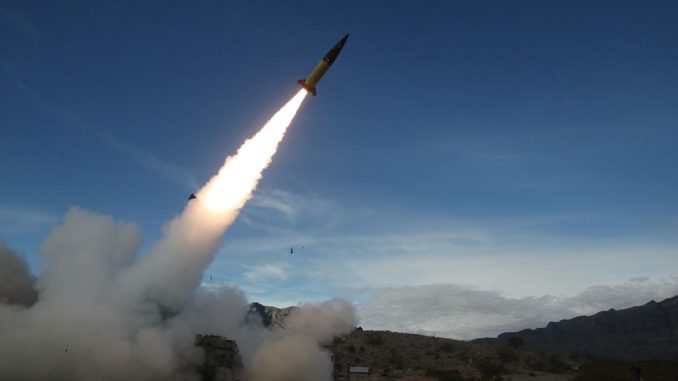
‘Ukrainian missile attacks in Russia could prevent more ground loss’
There is no official confirmation yet, but everything indicates that Ukraine is getting more room from the West to defend itself against Russian aggression. Kyiv may also use US-supplied long-range missiles for attacks in Russia, US media reported this weekend. Not a military game changer, but experts say the decision could strengthen Ukraine’s position – even if it ultimately takes a seat at the negotiating table.
These are ATACMS, ballistic missiles that can hit targets up to a distance of 300 kilometers. That is further than the British Storm Shadow missiles and the French Scalp, which Ukraine also has to a limited extent. As far as we know, these have not yet been used for targets in Russia itself.
According to American sources Washington would initially like to give permission to deploy the long-range missiles in the Kursk region, which Ukraine still partly controls since an offensive in August. President Biden is said to have changed tack after had become clear that there are probably 10,000 North Korean soldiers fighting with Russia.
“Storage sites, connection nodes, reserve units…”, Brigadier General and professor at the Dutch Defense Academy Han Bouwmeester lists the targets that Ukraine can hit with the ATACMS. “This prevents your opponent from supplying his troops, shuts down communications and eliminates reserve units. When you wage war, you must not only look at the front, but also hurt the enemy deeper in the terrain.”
Bouwmeester expects that the missiles will mainly enable Ukraine to better defend itself. “For a counterattack you need more power.”
Peter Wijninga, defense specialist at the Hague think tank HCSS, shares this opinion. “Those ATACMS will not make a strategic difference that will change the war, but they can help stop that force of 50,000 in Kursk.”
If the West really wanted to make a difference, it should have immediately allowed Kyiv to use the weapons in Russia itself, says Wijninga. “No one would have crowed about that. With the range of that ATACMS, fired from a Himars system, Ukraine, hundreds of Russian targets within reach. Without all those restrictions, the war would have turned out very differently.” The Institute for the Study of War, an American think tank, was also there yesterday note that ATACMS can potentially cause much more damage than just in Kursk.
Many systems and calibers
It is not clear how many long-range missiles Ukraine still has and how many can be delivered. Ukrainian President Zelensky in any case does not consider himself rich. “Today everyone is talking about allowing us to take necessary actions. But blows are not dealt by words. Such things are not announced. The missiles will speak for themselves.”
Bouwmeester understands his reaction. “The West is giving Ukraine just enough weapons to defend itself. Supplies could have been a game changer. Tanks, fighter planes could have made that difference, but then you have to deliver larger numbers.”
The many different weapon systems that Ukraine receives do not make things any easier, says Bouwmeester. “It concerns as many as 600 systems, from a single pistol to an F-16. This means that you must have separate logistics flows and spare parts. This great diversity, including calibers, raises the question of how effective it is.”
Pressure Trump to negotiate
Both Bouwmeester and Wijninga expect that the conflict will change once President Trump takes office. Trump has said he wants to end the war quickly; What he has in mind is as yet unclear, but it is expected that he will increase the pressure to sit at the negotiating table.
Wijninga thinks that President Putin will realize that it is in his interest to end the war next year. “The Russians are losing a lot of equipment and can no longer replenish it. Storage facilities are becoming empty.”
Ukraine also assumes that negotiations will take place next year, he says. “Parties have always expressed themselves in maximalist terms, but they know that they must have a plan B. It is logical that you do not communicate this, because then plan A immediately falls apart.”
Bouwmeester also sees discussions developing quickly. He notices that motivation is decreasing. “Ukrainian soldiers I recently spoke to openly stated this.”
According to him, Zelensky also “ripens the minds” for commitments. “He knows: we will no longer have to expect the same support from the US, let me make cautious statements about that, then the shock will not be so great.”
According to Bouwmeester, the ATACMS can prevent Ukraine from losing more ground in the near future. The professor expects little movement at the front, which still runs straight through the country.
“In the long term, that front could well become the demarcation line between the occupied part of Ukraine and a free part, which is promised Western security guarantees. The previous NATO boss Stoltenberg hinted at his farewell in September that within the alliance there had already been a year and a half of being talked about.”

Be the first to comment